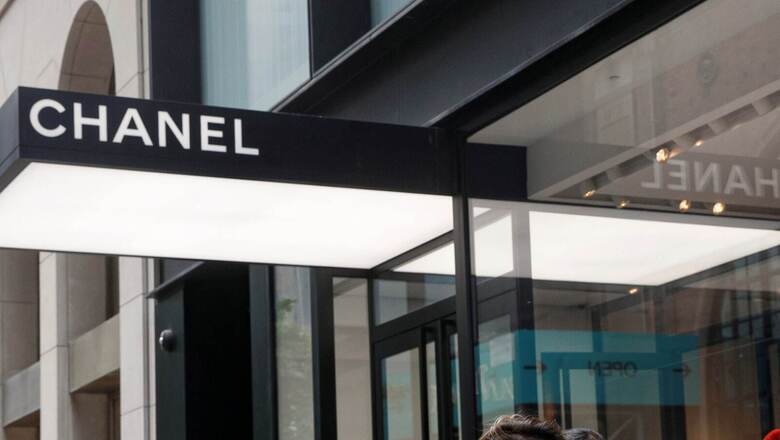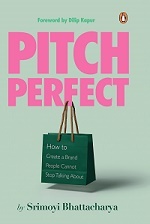
views
So how does one remain relevant as a legacy brand? Start with a meaningful message that will appeal to your existing consumer as much as to an increasingly young and aware audience. Change never happens overnight, but how do you keep pace with a globalized digital audience? You follow their path if it’s aligned with your DNA. And taking a stand usually helps. Think about who your brand ambassadors and friends are and whether you are building on a conversation or starting one.
It is believed that designer Coco Chanel’s universe was fuelled by art, music, and literature. When the brand Chanel decided to team up with Princess Charlotte Casiraghi of the royal family of Monaco, it was not only because of the world’s fascination for royalty, but also because she could conjure a side of Coco Chanel’s literary interests by starting a literary salon. It is a clever way to immerse the Chanel customer and admirer into the iconic brand’s intimate and mysterious world.
At Peepul, we like planning for long lead-ups so that there’s time to tell good stories. Sometimes it takes us six to nine months to plan a launch, and I caution against rushing this because the lead-up is as important as the launch itself. You want to first study the zeitgeist, your new market, and your potential customer and get comfortable with what it is and who they are. This takes time in order to be authentic. There are no CliffsNotes to this process.
I’ve already said that I overuse the word ‘pivot’, and another word I find myself and my team using often is ‘democratizing’. What we mean by this is that a luxury and/or heritage brand has to approach a new, and often larger, segment of customers in order to stay relevant and to evolve. Diversification is key to a legacy brand. One of the blessings and curses of these brands is that they can expand to new markets and acquire younger customers, but how they choose to do both can be challenging. As an agency, it becomes our responsibility to keep cool hunting for people who fit the values of the brand.
We always talk to brands about the story they want to tell. It is important to never compromise on brand values, because you are reinventing for a reason and not erasing your past. The conversations and stories you create will guide the journey into a new market, or with new customers. Swarovski is a favourite example of mine. A brand with a larger-than-life global legacy entered the Indian market and found a way to talk to this fairly complex and diverse audience. By creating clever collaborations, working on products that really resonate with the local market while maintaining global guidelines, and putting a huge push on their jewellery, which is always a hit with Indians, Swarovski has managed to become a part of routine conversation. It is at once aspirational and accessible. The brand DNA is untouched, but by tightening and focusing their messaging, they have both mass appeal and are ‘masstige’ in a sense. With stores at airports, crystals on sarees, and capsule collections, they are accessible and coveted.
When a legacy brand goes local, it’s always a bit of a gamble. Hermès, the iconic luxury house, known for its richly coloured scarf designs, sought to boost its presence in India with a limited-edition sari, which was priced in line with the brand’s other comparable products. I have to say that as a sari lover, I thought it was a brilliant idea. A dear friend of mine bought a piece, and I could see why. It was a collectible. But does the exclusivity tag work in India? I am not sure. So as Forbes India wrote at the time, ‘How well the Indian market will respond to the French couturier’s offering is anyone’s guess.’
Staying Relevant
From a legacy standpoint, there is one brand that I feel let down by—the iconic Ambassador car, which is now close to extinction. When I moved to India, I had the chance to buy a second-hand Ambassador (which is painted hot pink, if you please). You’d be surprised (or not) to know that the Ambassador gained a lot of attention from diplomats and expats who perhaps saw it as a relic from bygone times. This car has actually oddly enough ‘branded’ me and frankly needs no PR. It makes people smile on the streets and just generally is a showstopper.
Sadly, Hindustan Motors stopped manufacturing its famous Ambassador after a few failed attempts to revive it, sometime in 2014. I was one of the last perhaps to buy a second one, in 2013. To me, it reminded me of my summer holidays in Calcutta and brought many memories along with it. I never understood why a car with such a storied journey and romance never made it. The definition of comfort and branding changed, and unfortunately the Ambassador couldn’t keep up with our times, and so its manufacturing was ceased.
***
All Together Now
Collaborations are a fantastic way to revitalise a brand, take it in a new direction and/or attract a different kind of customer. For publicists, collaborations provide the impetus to be experimental, manage interesting conversations, and accompany a client on an important journey. There are many reasons why brands decide to collaborate, but if we were to generalise, an association between two brands helps each of them explore new avenues, reach out to one another’s target audience, and experiment in a fairly non-risky manner. If engineered correctly and with enough thought, a collaboration is great fun all around.
The designer Sabyasachi Mukherjee, for example, decided to partner with French kindred spirit in the couture space, the talented and whimsical Christian Louboutin (whose heels can kill you but you can kill for, too). Both couture makers associated in the making of limited-edition footwear for Louboutin’s twenty-fifth anniversary. Christian Louboutin brought Sabyasachi’s workmanship to the world beyond the sari and lehenga, while he was also able to cater to the Indian market with a gem of a boudoir in his store in Mumbai that would be for brides. Both have pursued many further successful association at landmark moments with critical acclaim and sales success. Such inventive associations are unique and essentially fuel new audiences and reignite conversations beyond the business footprint.
Pareina Thapar, who represents Sabyasachi and works closely with him, spoke to me about how the designer constantly injects new ideas into his eponymous brand—‘Sabyasachi has a clear vision to build a global luxury brand from India. He is a long-term thinker who has sharp clarity of vision. Having a strong creative voice, an entrepreneurial spirit and the ability to understand business realities is rare. Sabyasachi has plotted the path of his brand carefully, and he builds teams that reflect the brand values and then empowers them to execute his vision. Legacy is not built in the short-term.’

Read all the Latest Opinions here




















Comments
0 comment